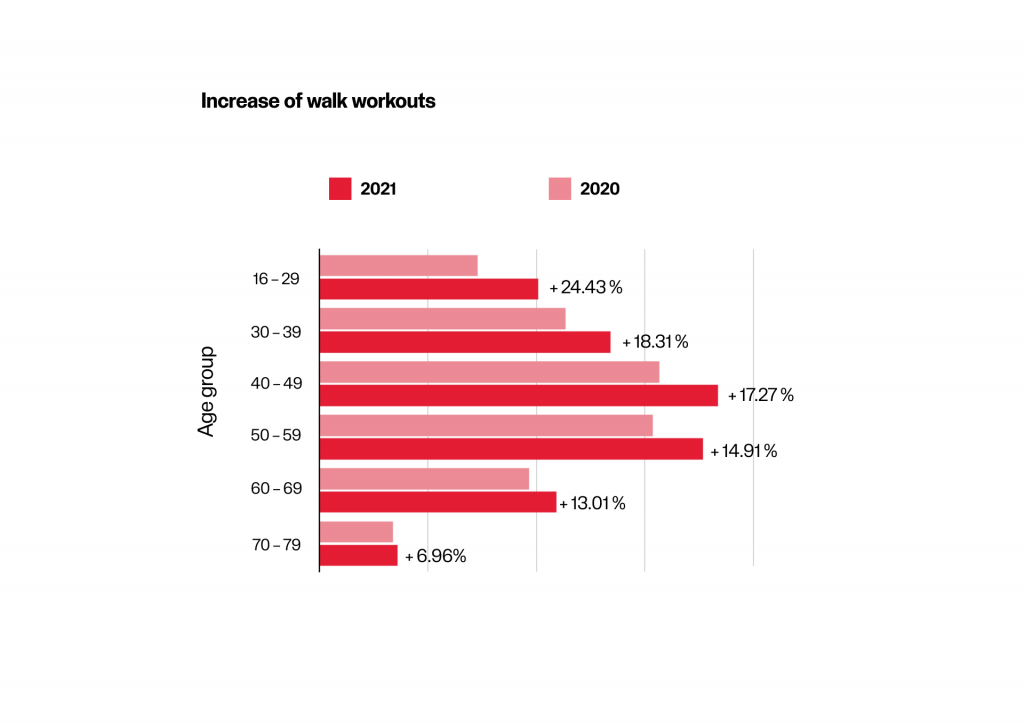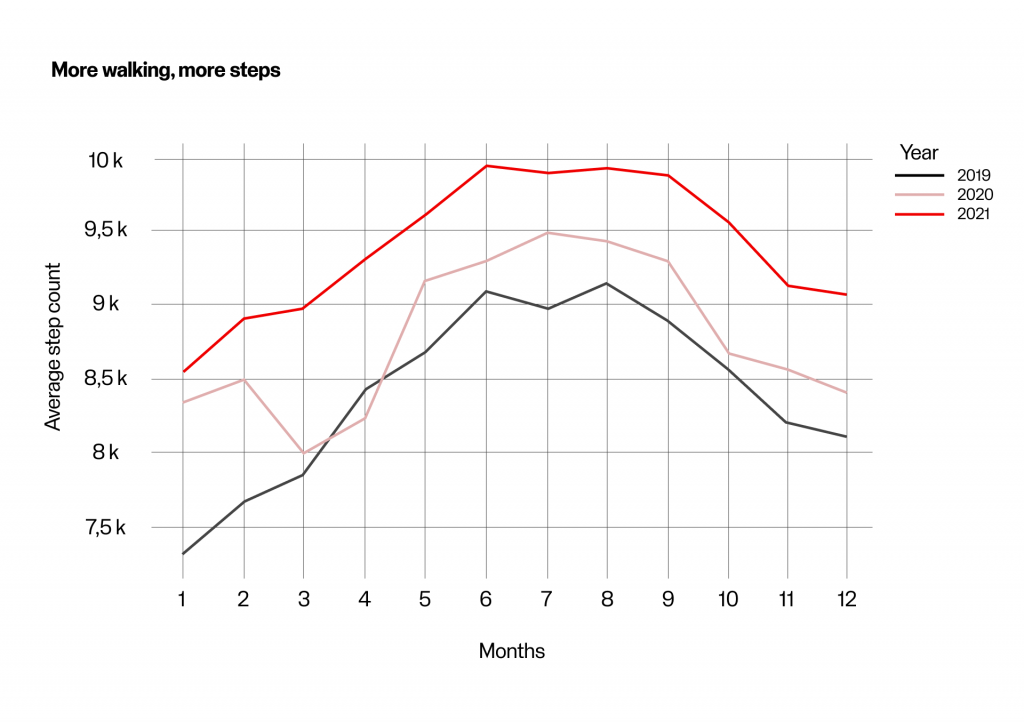NEW POLAR DATA REVEALS THE UNEXPECTED WAY GEN Z IS STAYING ACTIVE
What started as a pandemic trend has remained, as walking continues to be a top activity for young people.
Recent data released from Polar Electro, the world leader in wearable sports and heart rate technology, reveals that walking has continued to grow among the Gen Z cohort over the past year. The activity has seen a 25% increase year over year with Polar users aged 16-29 taking more than three walks each week.
The popularity of walking workouts began in 2020, during the pandemic, but as the world adapts to living with COVID, walking continues to grow among younger people. While traditional thinking leads one to assume that younger generations would focus more on higher-impact, more intense exercises in efforts to gain more physical benefits quicker, this data seems to suggest a shift in perception as Gen Z further embrace the low impact, high benefit activity.

The physical and mental benefits of walking are well documented with studies indicating that those who walk regularly are healthier and live longer than those who do not. Dr. Raija Laukkanen from the Polar Research Center explains; “Walking is one of the most simple and effective ways in which we can remain healthy day to day. This versatile exercise allows for deviations in intensity, making it extremely accessible. Also, as the conversation on young people’s mental health continues to rise, walking can support in improving mood, reducing depression, tension and stress and even allowing for better sleeps.”
Unsurprisingly, the walking trend has also contributed to an overall increase in Polar user’s average daily step count. The anonymized data shows 9,500 steps taken during the summer months in 2021, which is around 500 more steps per day on average when compared to 2020.

This trend is also being seen around the world, with 16% of activity in the UK now accounting for walks. On average, across all age groups, walks are lasting over an hour with Polar users burning around 360 calories per session.
As this trend looks to continue, Dr. Laukkanen also provides some additional recommendations for how all walkers can get the most out of their walking workouts:
- To get results, it doesn’t always need to be about having a high intensity workout. Low intensity, slow walks can help people to maintain their cardiovascular health.
- High intensity walking exercises, such as Nordic Walking (using walking poles) can be a good way to amplify the positive results of walking around the body, by utilizing more muscles.
- Changing the terrain of your walks can also help in providing variety to the intensity of the workout. For example, going uphill or downhill can have a large impact on the intensity of a walking workout and can lead to even greater results.
- Consider walking with a group of people to make it more of a social experience. While this may not improve your physiological health, it can have a positive impact on your mental health and stress levels.
- Tracking heartrate during your next walk can help you optimize your exercise and learn more about your heart rate zones in different contexts, ensuring you get the most out of your walks.
Check out the Polar RIA Foundation Member profile here .
